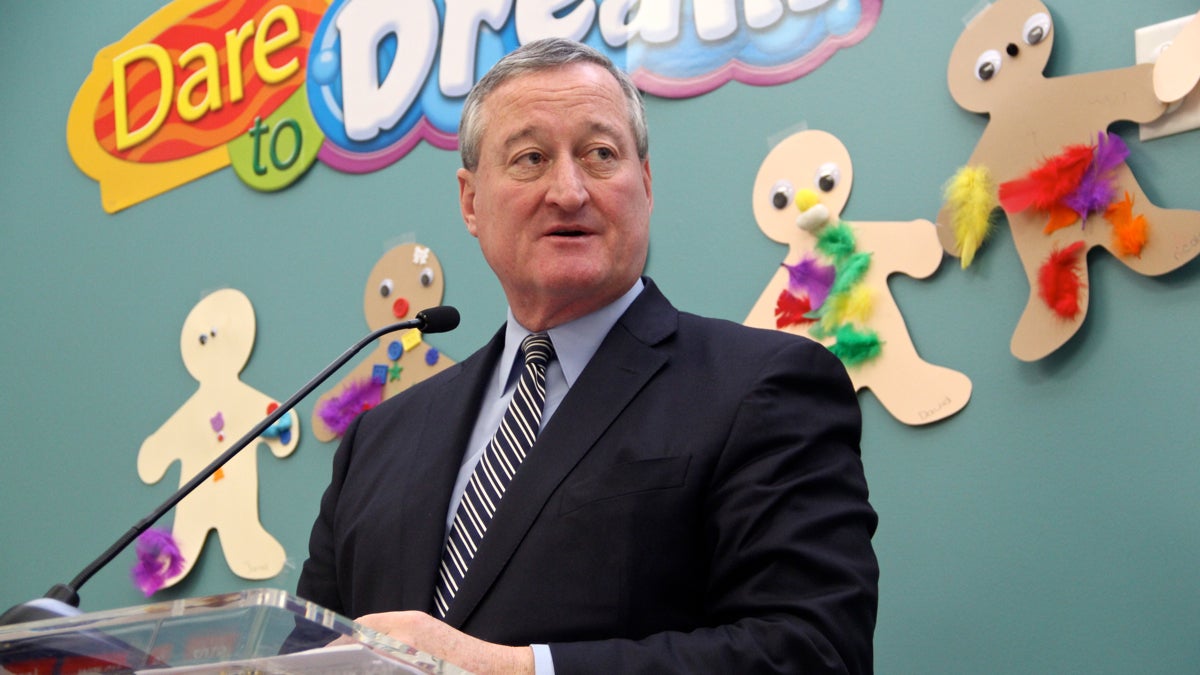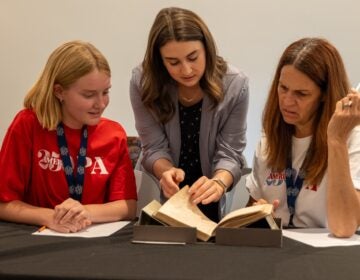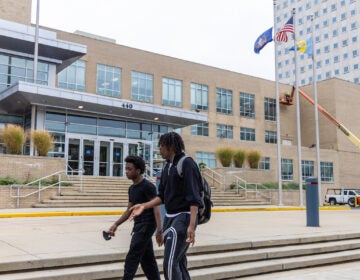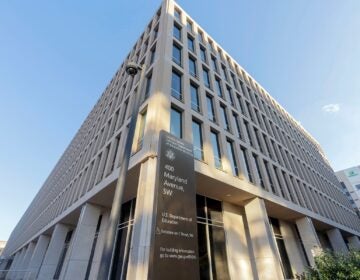Kenney administration releases some details of ‘community schools’ plan for Philly

Mayor Jim Kenney wants to create 25 community schools over the next four years. (Emma Lee/WHYY)
Philadelphia Mayor Jim Kenney plans to begin implementing a “community school” model in 5 to 7 schools by September. Each one will add programs specifically tailored to the social, emotional and physical needs of not just students, but the surrounding neighborhoods.
The schools haven’t yet been selected, but officials confirm they will be traditional public schools, not charters. The plan is contingent on City Council approving $4 million as the mayor proposed in his budget address earlier this month.
Kenney wants to pay for this, as well as pre-K expansion and upgrades to parks, recreation centers and libraries with a three-cents-per-ounce tax on sugary beverages.
In an exclusive interview with NewsWorks, the Kenney administration detailed its still developing plans to create 25 community schools over the next four years.
Officials estimate that it will cost taxpayers about $40 million over four years. However that assumes some additional money will come from philanthropies.
The administration plans to get input on how it will select schools this year through May.
A rought draft of criteria for selecting which schools get picked favors ones in neighborhoods where poverty and crime rates are high and student health needs are significant. Those are places where the administration feels it can serve the most children with the deepest needs.
The city will also work with the School District of Philadelphia to prioritize a geographically diverse set of schools where principals and staff are enthusiastic about the model.
The mayor’s office hopes to choose schools in June and July and hire a school coordinator for each location by the end of August. Those school coordinators — full-time employees of the city, not the school district — will begin site-specific planning as the school year begins.
Susan Gobreski, the mayor’s director of community schools, says she hopes to create schools tailored to the unique needs of surrounding communities.
“Each school will go through a planning process, where they’re actually looking at what their strengths and assets are, what their needs are,” she said. “So they can start identifying a set of services that make sense to put into place.”
As examples, Gobreski says one school community may prioritize opening a food pantry, while another could stress the positive benefits of having onsite asthma care, and another could push for an in-house behavioral health counselor.
Coordinators at each would work to leverage those resources into schools by partnering with existing nonprofits and/or refocusing the efforts of city agencies. When gaps persist between need and availability, Gobreski says the community schools budget includes some funding to make up the difference.
In addition to these student supports, Gobreski says community schools will also offer programs for families and neighbors — which the mayor’s office believes will give neighborhoods a greater sense of ownership of their schools.
The hope is that this creates the social capital needed to provide schools with long-term consistency that will persist even if the principal changes.
The city says it’s still hashing out how to measure the success of the initiative. Gobreski cited a list of possible factors including graduation rates, reducing absenteeism, and family and educator satisfaction levels.
Gobreski put less emphasis on the results of state standardized tests.
“The question is not: ‘will the test scores improve?'” she said. “The question is, ‘What do we need to measure to actually see if we’re meeting the needs of children?”
The mayor’s office points to similar programmatic successes in Los Angeles, Cincinnati and Kentucky as proof that the model can boost student achievement.
Last week, former superintendent David Hornbeck lavishly praised the model in an opinion piece published in the Philadelphia Public School Notebook.
Others, especially those in education reform circles, are more skeptical about the potency of the model.
Gobreski referenced Maslow’s hierarchy of needs as the core of the city’s logic.
“Kids have a whole host of needs — and academic needs are one of them — but making sure we’re addressing their physical and social and emotional needs helps improve learning conditions,” she said. “Part of the goal here is to help clear the decks so that educators are not solely responsible for dealing with all the needs that children have.”
This story has been updated to reflect that mayor’s office revised its first-year community schools goal from 4-6 to 5-7.
WHYY is your source for fact-based, in-depth journalism and information. As a nonprofit organization, we rely on financial support from readers like you. Please give today.





